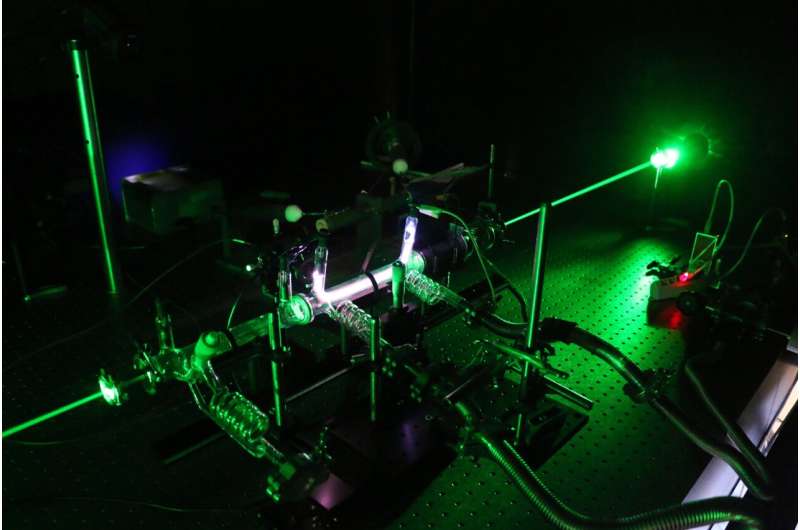Natural conditions on the red planet are nearly ideal for in situ resource utilization by plasmas, since the atmosphere is primarily formed by carbon dioxide that can be split to produce oxygen and its pressure is favorable for plasma ignition.
Two big hurdles stand in the way of producing oxygen on Mars.
"First, the decomposition of carbon dioxide molecules to extract oxygen. It's a very difficult molecule to break," said author Vasco Guerra, of the University of Lisbon. "Second, the separation of the produced oxygen from a gas mixture that also contains, for example, carbon dioxide and carbon monoxide. We're looking at these two steps in a holistic way to solve both challenges at the same time. This is where plasmas can help."
Plasma is the fourth natural state of matter, and it contains free charged particles, such as electrons and ions. Electrons are light and easily accelerated up to very high energies with electric fields.
"When bulletlike electrons collide with a carbon dioxide molecule, they can directly decompose it or transfer energy to make it vibrate," Guerra said. "This energy can be channeled, to a large extent, into carbon dioxide decomposition. Together with our colleagues in France and the Netherlands, we experimentally demonstrated the validity of these theories. Moreover, the heat generated in the plasma is also beneficial for the separation of oxygen."
Oxygen is key to creating a breathable environment, as well as the starting point to produce fuels and fertilizers for future Martian agriculture. Local production of fuels will be important for future missions. All are essential for future human settlement on Mars.
By dissociating carbon dioxide molecules to produce green fuels and recycle chemicals, the plasma technology may also aid in addressing climate change on Earth.



